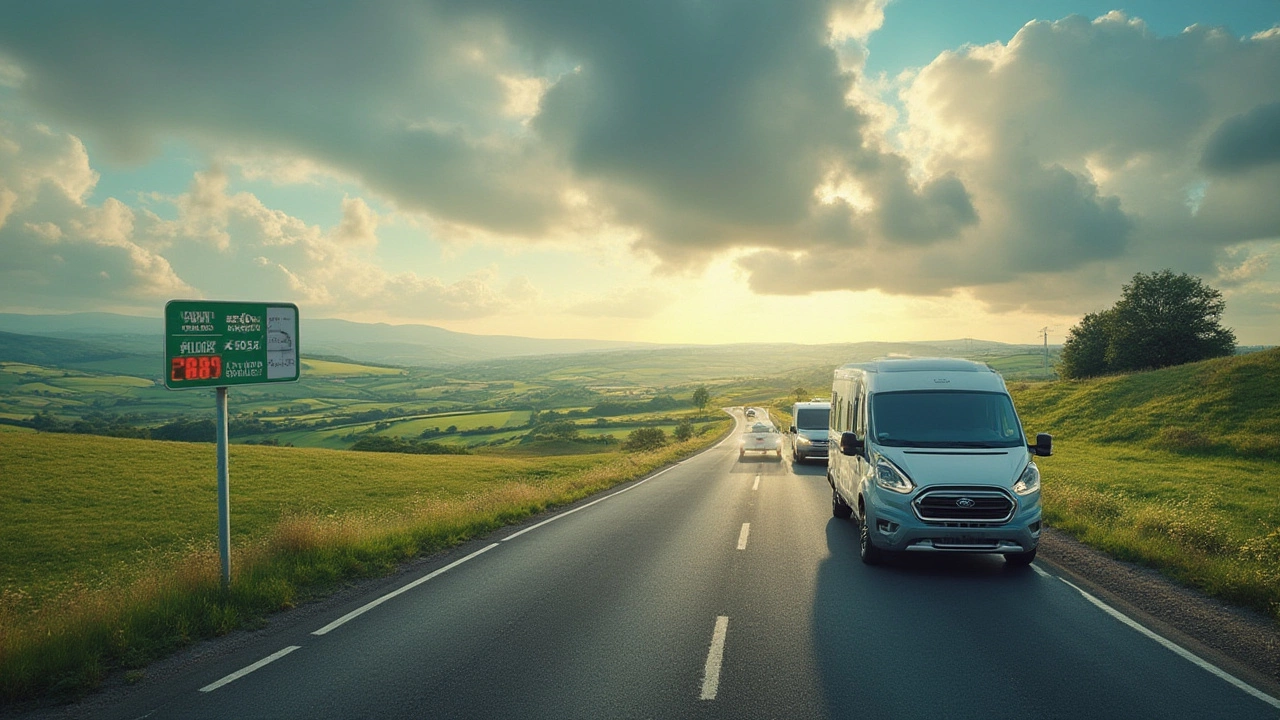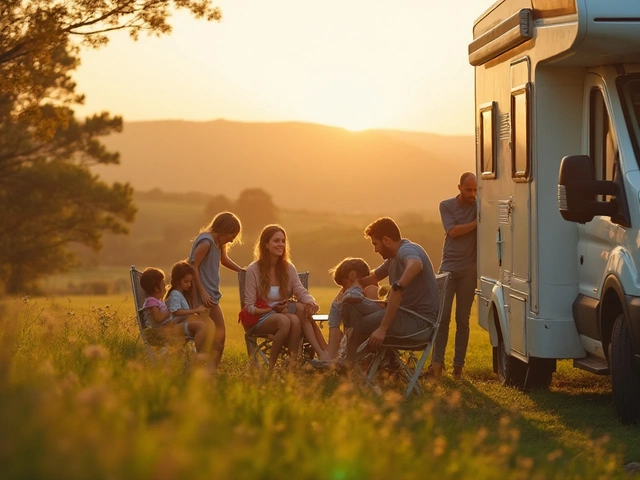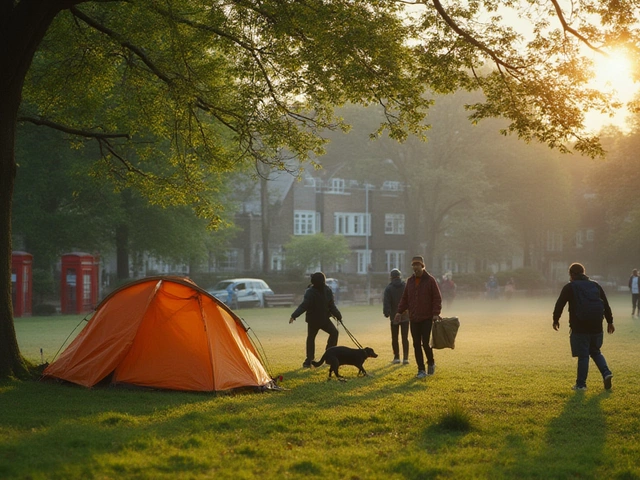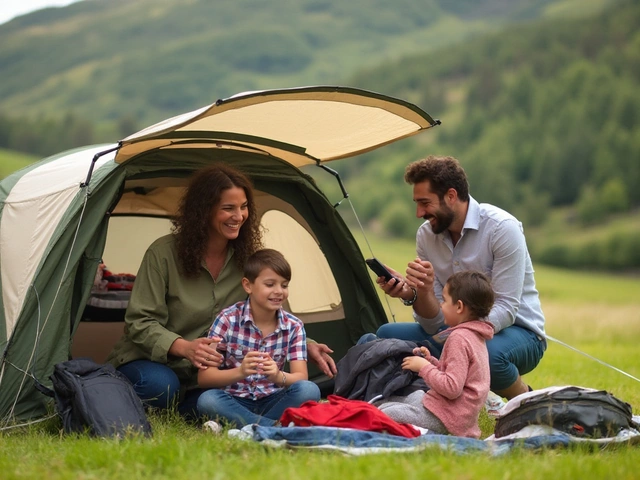Picture this: you’re sitting across the kitchen table, map sprawled out, arguing with your partner about that dream road trip. Should you hook up a camper to your truck, or rent or buy a full-blown RV and just roll? That one decision can change your whole trip—sometimes by thousands of bucks.
The rumor on the campfire circuit is that pulling a camper wins every time for penny pinchers. Sounds simple, right? You just hitch up, hit the road, and bask in the savings. But real road trips slip in with surprises, hidden costs, and unexpected perks, depending on your style. So, before you slap that For Sale sign on your neighbor’s used Winnebago or go trailer shopping, let’s crunch real numbers, dig into stories from the road, and tear through the myths clogging up camping forums. By the end, you’ll know what’s truly lighter—your wallet from RV payments, or your sense of freedom on the open highway.
Breaking Down the Real Costs: Camper vs RV
The money question, right? People love to throw around rough averages, but let’s slice through theory and get real concrete. If you already own a pickup or SUV, pulling a camper can seem like a no-brainer. Camper trailers start at around $10,000 for a basic model and can hit $35,000+ for something fancier, new off the lot. If you’re hunting for used, the price can drop down below $6,000 easily, especially on resale sites in late fall when folks are desperate to unload last summer’s purchase. But you do need a vehicle big enough—think half-ton trucks or sturdy SUVs—and those can sip gas like camels at an oasis.
Now, flip it. Roll up to the RV showroom, and the sticker shock can make you dizzy. Class C motorhomes (the midsize ones with the van fronts) hover between $60,000 and $120,000 new, while Class A giants crash through $120,000 and can outstrip some houses. Even an old, gently used rig will rarely dip below $25,000 if it’s drivable and not leaking more than the local swimming pool. That first check is a beast, but what about everything after?
Maintenance—oh, this one’s a sneaky monster. Regular RV repairs cost double or triple what you’d pay for a smaller vehicle or basic trailer. Think $1,000 for a simple fix on an RV generator or A/C unit, compared to under $400 for most camper fixes. Insurance throws in another curve: the average annual premium for an RV sits around $1,200, while a towed camper, covered as part of your main vehicle, might add only $150-500 per year. Storage costs can’t be ignored either. RVs need big lots or nice driveways—most neighborhoods don’t love a 35-footer parked on the curb. Trailer folks can sometimes stash campers at home or squeeze them into tight spaces, saving those $500+ annual storage fees.
Let’s bring some key costs into an easy reference:
| Expense | Camper (Annual) | RV (Annual) |
|---|---|---|
| Insurance | $150-500 | $1,200-2,500 |
| Maintenance | $300-800 | $1,500-4,000 |
| Storage | $0-400 | $350-1,200 |
| Depreciation | $800-2,000 | $3,000-8,000 |
Depreciation’s worth a quick extra glance. RVs drop value like a rock in the first 3 years—sometimes $10,000 or more, even if you baby them. Trailers still lose value, but way slower, since their guts are simpler and easier to refresh. So, the up-front price tag is just the start. Savvy travelers keep their calculators close for the rest of the ride.
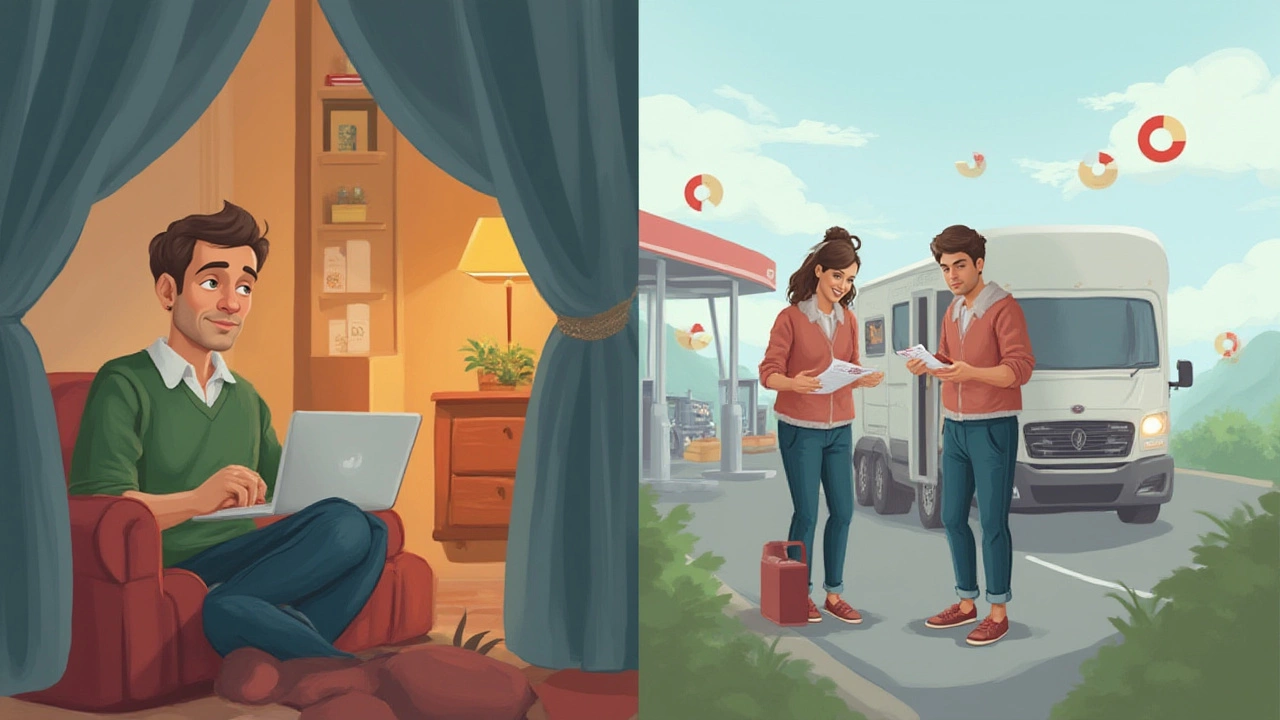
Fuel, Freedom, and Real-Life Numbers on the Road
Let’s not ignore the fuel pump—the cost that tags along on every single trip. Towing a camper with a gas-powered truck typically drags your miles per gallon down to 9–14 MPG, depending on your rig, the trailer’s weight, hills, and your driving habits. Add a bunch of wind, mountain grades, or lots of starts and stops, and you’ll watch your fuel gauge sink. For RVs, it’s usually worse. Class C models get 8–12 MPG, and the big Class A coaches sometimes gulp down just 6–10 MPG. Diesel engines hold up better over long distances, but their maintenance is pricier, and diesel’s rarely cheap these days—today, it’s hovering around $4.10 a gallon in most states, while gas sits nearby at $3.70.
What about handy camper vans or those tiny teardrop trailers? These can keep road costs lower—some vans manage up to 20 MPG, while super-light trailers don’t hit your tow vehicle’s fuel efficiency quite so hard. Handy if you’re doing cross-country bursts instead of lumbering along the scenic route. If you’re planning short trips close to home, a camper trailer shines. You only burn through extra fuel while towing. For daily errands, you unhook and stick with your regular truck or SUV, which probably gets way better mileage solo than hauling its own house behind it.
In campgrounds, size also matters. RV parks sometimes charge more for oversized rigs, especially if they need 50-amp service or a double-length pad. Some state parks cap trailer length or rig size. A pop-up camper can squirrel into sites for tent prices, but that 40-foot Class A? Prepare to pay premium or, worse, get turned away in peak season when only smaller spots are left. Want to boondock (that’s free camping off-grid)? Smaller campers and tow vehicles can fit into out-of-the-way places where RVs can’t follow. So, pulling a camper doesn’t just save you money at the pump—it can unlock campsites and road access that would leave larger RVs stranded. That’s freedom the big guys can’t buy.
- Always check your tow vehicle’s limits. Overloading isn’t just dangerous—it wrecks fuel efficiency and can void your insurance if something goes sideways.
- Plan trips with gas stations in mind. Remote stretches, especially in western states, have fewer pumps, and running out with a loaded trailer or RV isn’t fun.
- Apps like GasBuddy help you track the cheapest stations on your route, saving dimes—and after a month on the road, those dimes add up.
- If you’re thinking of switching to an electric tow vehicle, the truth is, EV towing isn’t ready for serious, long-haul campers. Real-world tests in 2024 show that range drops by 50% or more with midsize trailers. Infrastructure’s catching up, but it’s not there yet.
Some folks swear by the flexibility of having a separate tow vehicle. Want to run to the grocery store or explore a funky downtown? Just unhitch and roll in your truck, not a whole RV. This is a luxury that solo RV folks miss unless they flat-tow a car—a whole other web of cost and hassle.
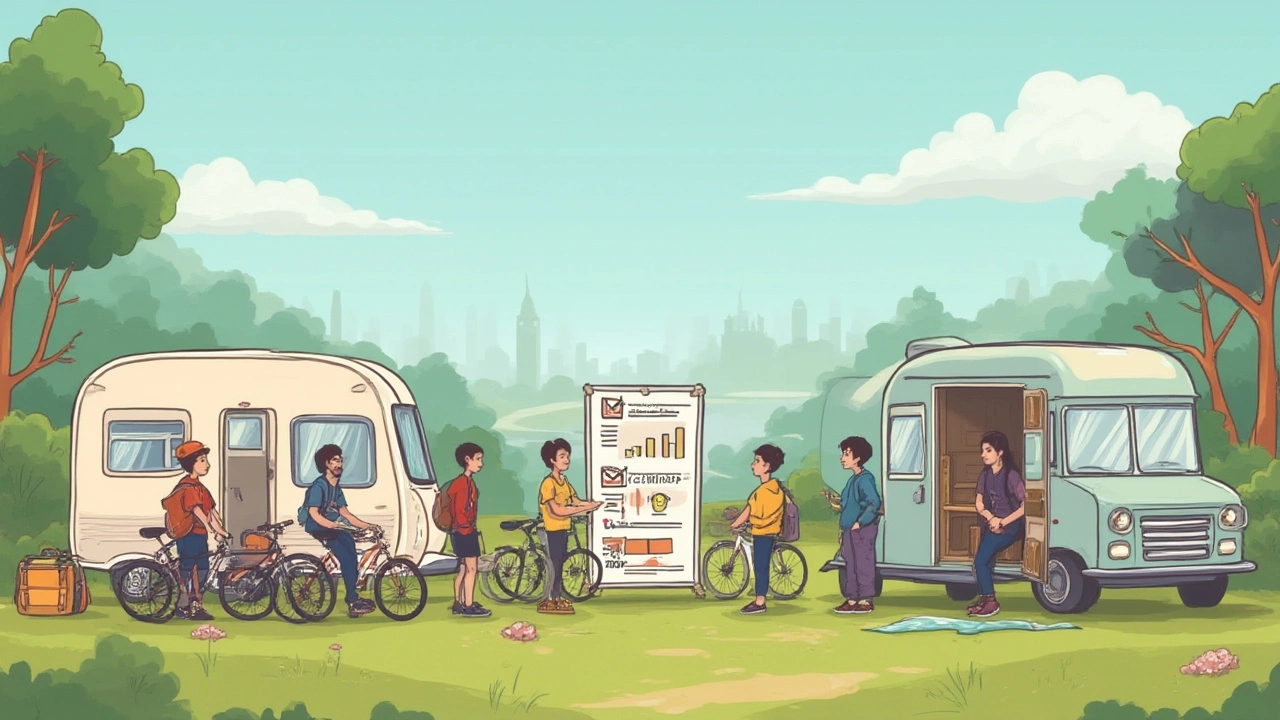
Hidden Factors and Smart Tips for Cheaper Adventures
Here’s where it gets tricky. You can budget every line item, but the way you use your setup really determines your costs. Are you planning to camp every other weekend, or is the goal one big annual summer migration? Full-timers often lean toward RVs for the self-contained comfort and giant water tanks. People who camp four times a year on long weekends can get more mileage out of a simple trailer or pop-up. Storage fees stack up fast if you can’t keep your rig at home—don’t ignore that cost, even if it feels minor next to fuel and insurance.
Resale is another curveball. RVs, especially motorhomes, drop value fast in three years, then level out. Trailers depreciate, but you can often recoup more if you keep them clean and updated. In the used market, simple systems and less tech attract buyers wary of pricey repairs. This is why, even though Class C and Class A RVs are loaded with gadgets, their complex guts cost more in lost value and dollar signs at the shop.
Camping gear is often the unsung hero. Separate trailers mean you keep costs down by maximizing space in your tow vehicle—coolers, bikes, fishing gear get tossed in the bed or stored easily. With an RV, storage seems endless until you’re living with clutter or paying for creative space solutions. Trailers also mean you’re less likely stuck with expensive brand-specific parts—modern campers use a lot of standardized gear, so you can shop around or hit up a hardware store, instead of tracking down an RV dealership miles from nowhere.
Now, sometimes the “cheapest” option isn’t about every dollar spent. RVs almost always offer bigger water and waste tanks, better insulation, and bigger spaces for larger families. If you’re avoiding restaurants or hotels by camping in luxury, those costs do offset some of the big up-front price. I know a family who spent two months on the road last summer in a used Class C—they paid more for gas, but saved thousands by never booking a hotel. Flip side: some friends with a 17-foot camper hit 18 different state parks and BLM lands one summer, only spending half as much as the RV folks on fuel, fees, or repairs.
If saving is your top goal, here are my top tips:
- Buy used after the season, when demand dips and dealers cut prices.
- Keep up with basic maintenance, especially tires and seals—nothing eats savings faster than a highway blowout or a leaky roof.
- Plan your trips to maximize stays in state/national parks or free, legal camping sites.
- Track your actual fuel use, not just estimates. Sometimes, a well-packed, aerodynamic trailer costs less to tow than a loaded-up RV.
- Don’t forget the “hidden” expenses—licenses, taxes, and campground fees vary wildly by state and your vehicle size.
The answer to the big question? Pulling a camper usually wins, if you already have a decent tow vehicle and favor shorter, simpler trips. RVs cost more up front and long-term, but win in sheer convenience—especially if you roll full-time or hate setups. At the end of the day, it’s about trade-offs. Some folks trade cash for comfort, others prefer a thick wallet and a thin footprint. You really can’t fake the freedom of rolling with your bed, kitchen, and dog in tow—and whatever you drive or pull, there’s a version of the open road that fits your wallet.
